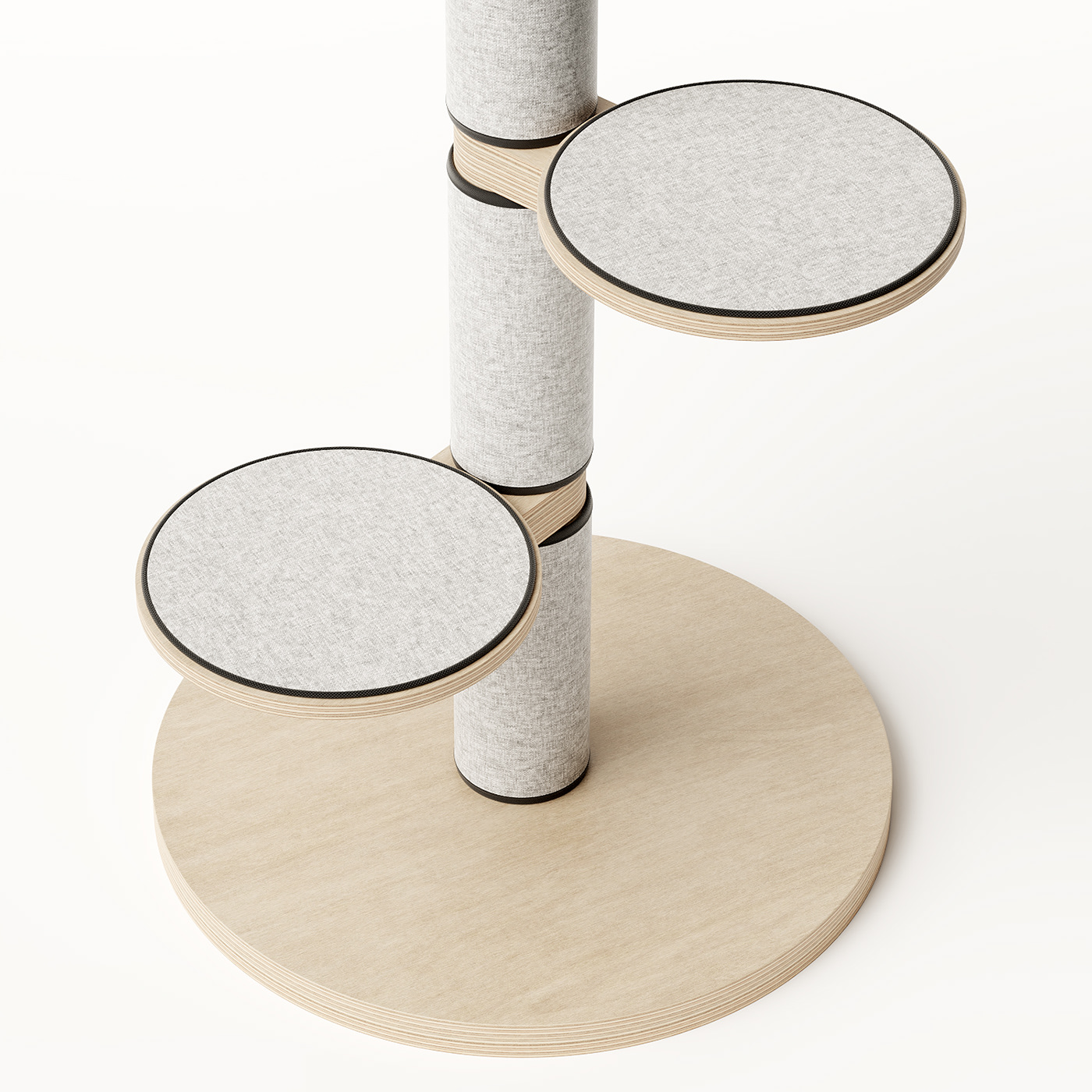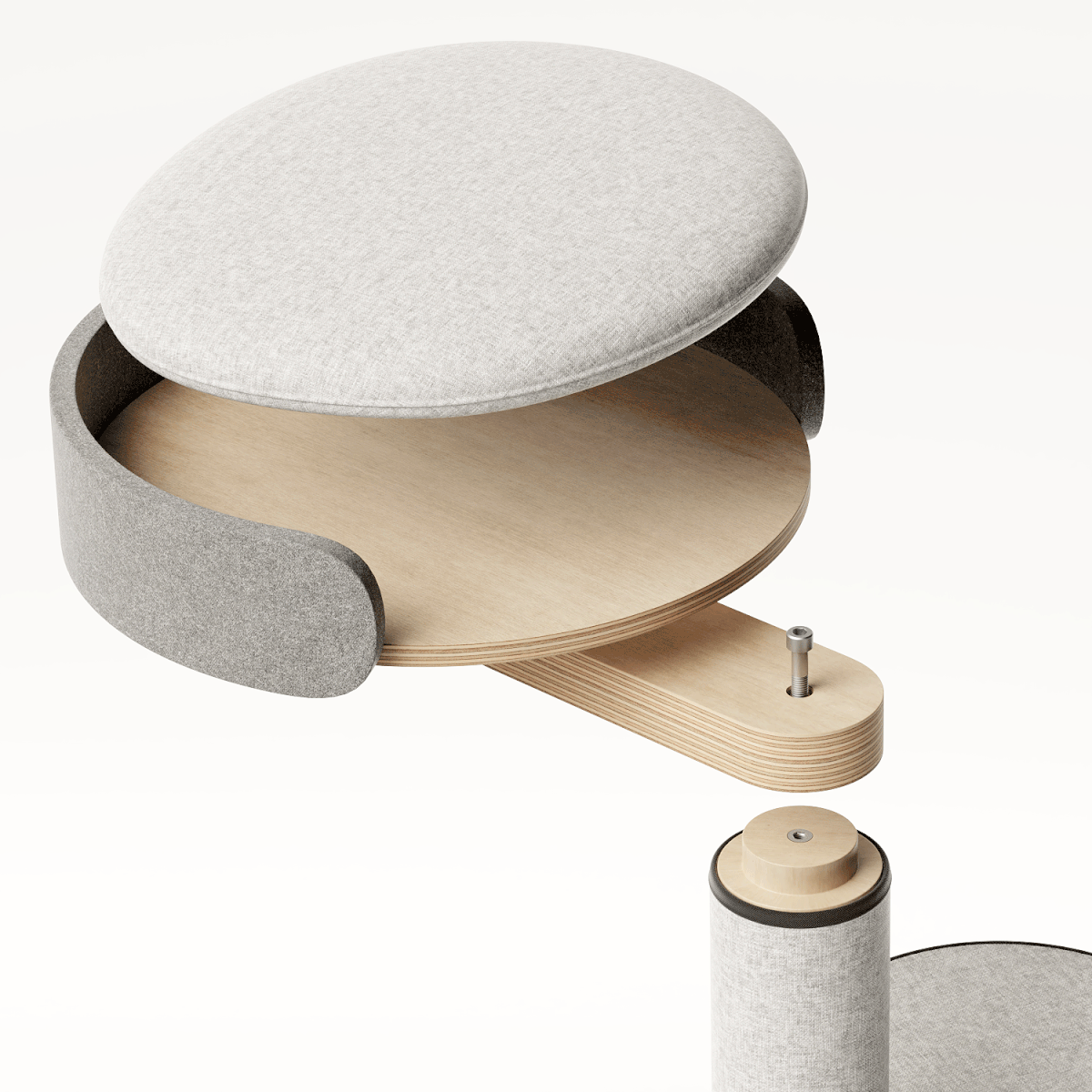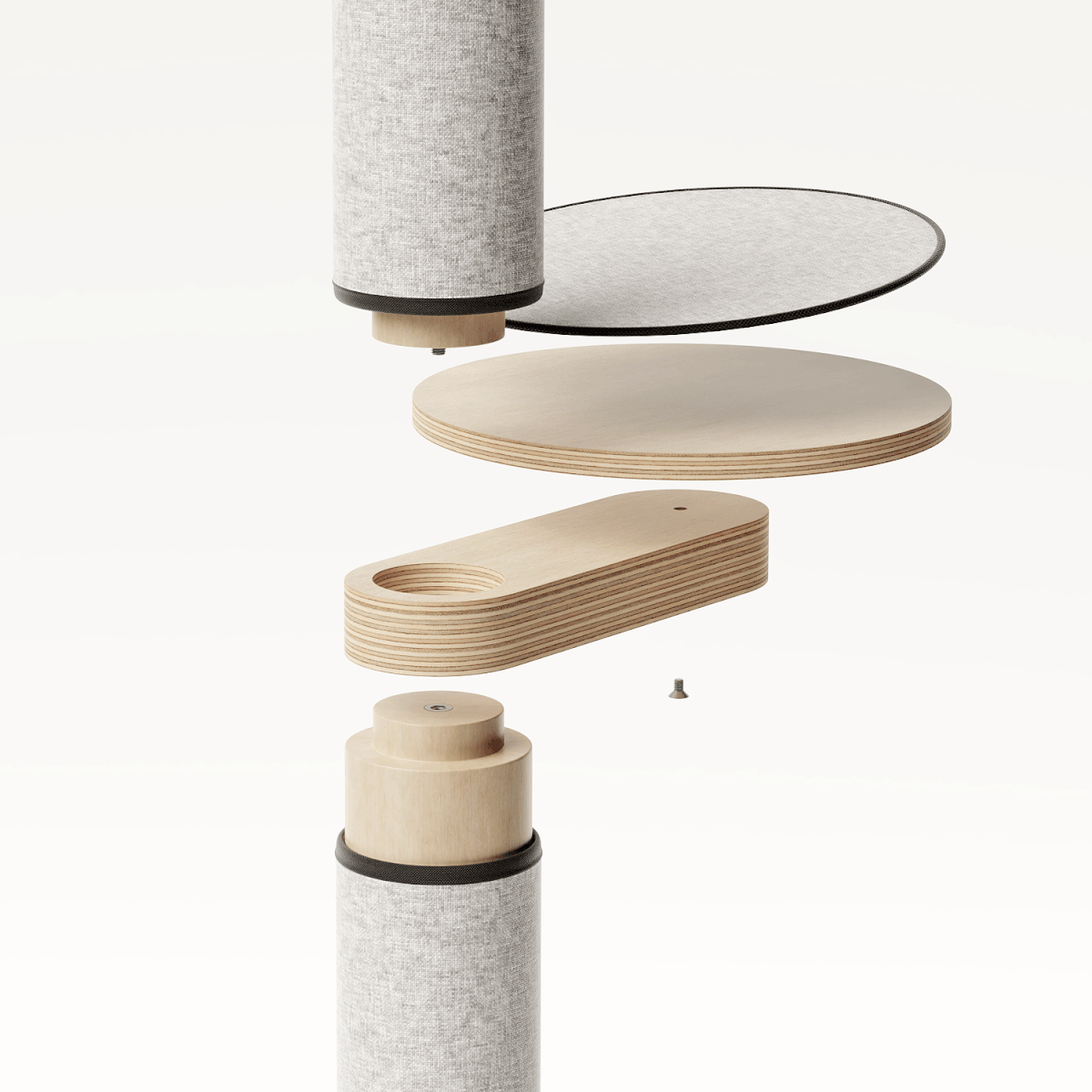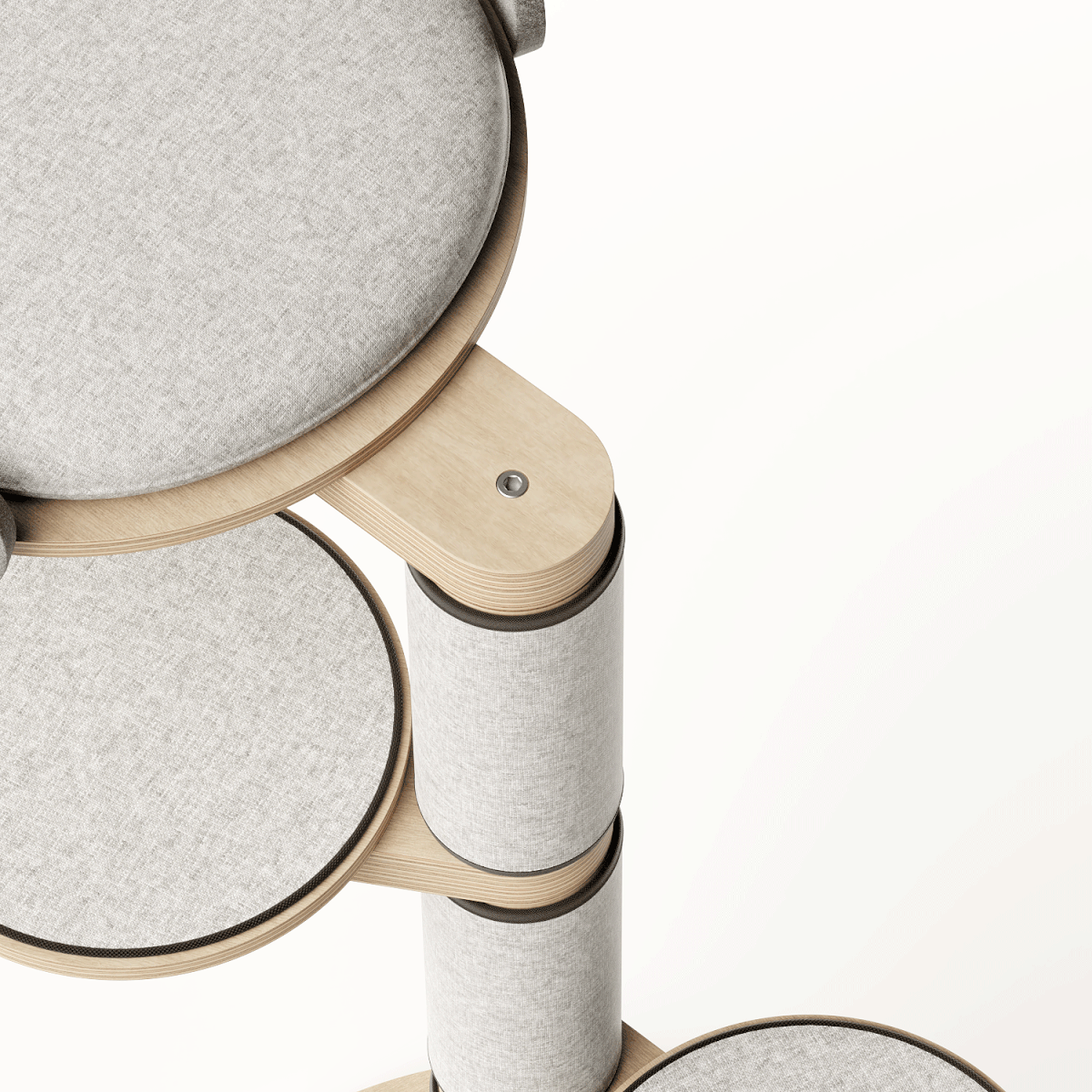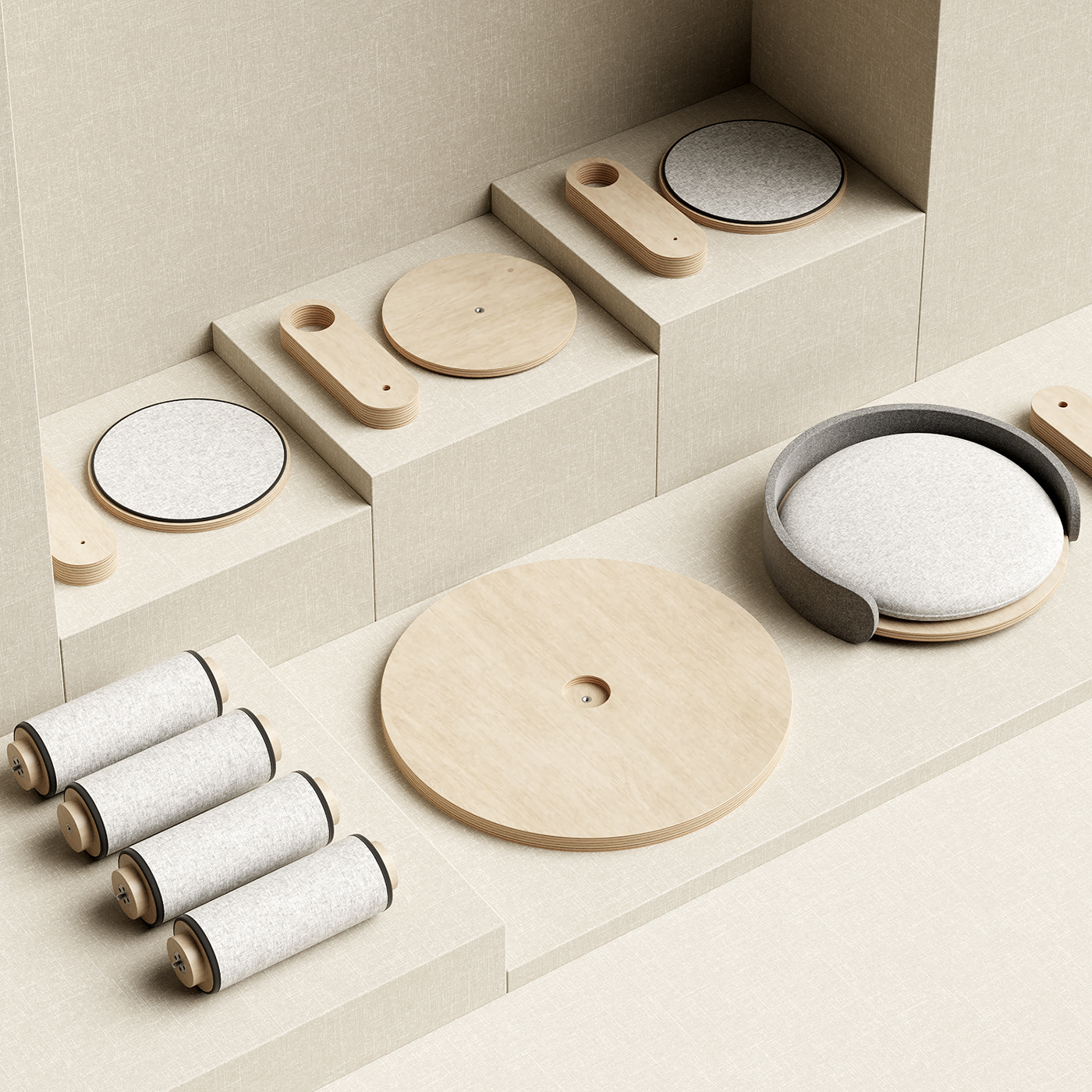A few months ago, I was asked to design some pet furniture (specifically a cat tree). I was very excited with this for many reasons. On the one hand, pet furniture design has become really trendy lately and it was a great opportunity to enter the game. On the other hand, designing something that I haven’t before is always a good chance to bring some freshness to the play. Oh, also I love pets! The briefing was plain simple: design an affordable and flat-packed cat tree with added functionality, like scratching modules and top bed. The design should also blend well with furniture around the house. Some particular materials had to be used during design process, based on manufacturer reality and client need.

In a somewhat short period of time, it’s crazy how many solutions are already available on the market. This was a challenge to begin with. We opted for a single tower design with minimal approach for some reasons: better fit for smaller spaces. Less components, therefore faster and less complex assembling system. Minimal design to balance between functionality, affordability and finishes quality. The design finds its most unique feature by the way its wooden steps are placed, appearing to be floating, while on most solutions available these are often contouring the main wood rod. Plywood was a briefing foundation so we explored this in a very raw manner assuming the edges as part of the design aesthetics, adding value and charisma. The wooden rods are turned and then covered with elastic sleeves made out of scratching material (which allows this to be replaced overtime). As for the plywood components everything is CNC milled on the same board, joining two layers for the thicker parts. The top bed is wrapped with felt for a comfier feeling, and scratching material bases are placed on top of the wooden steps to avoid slippy surfaces.


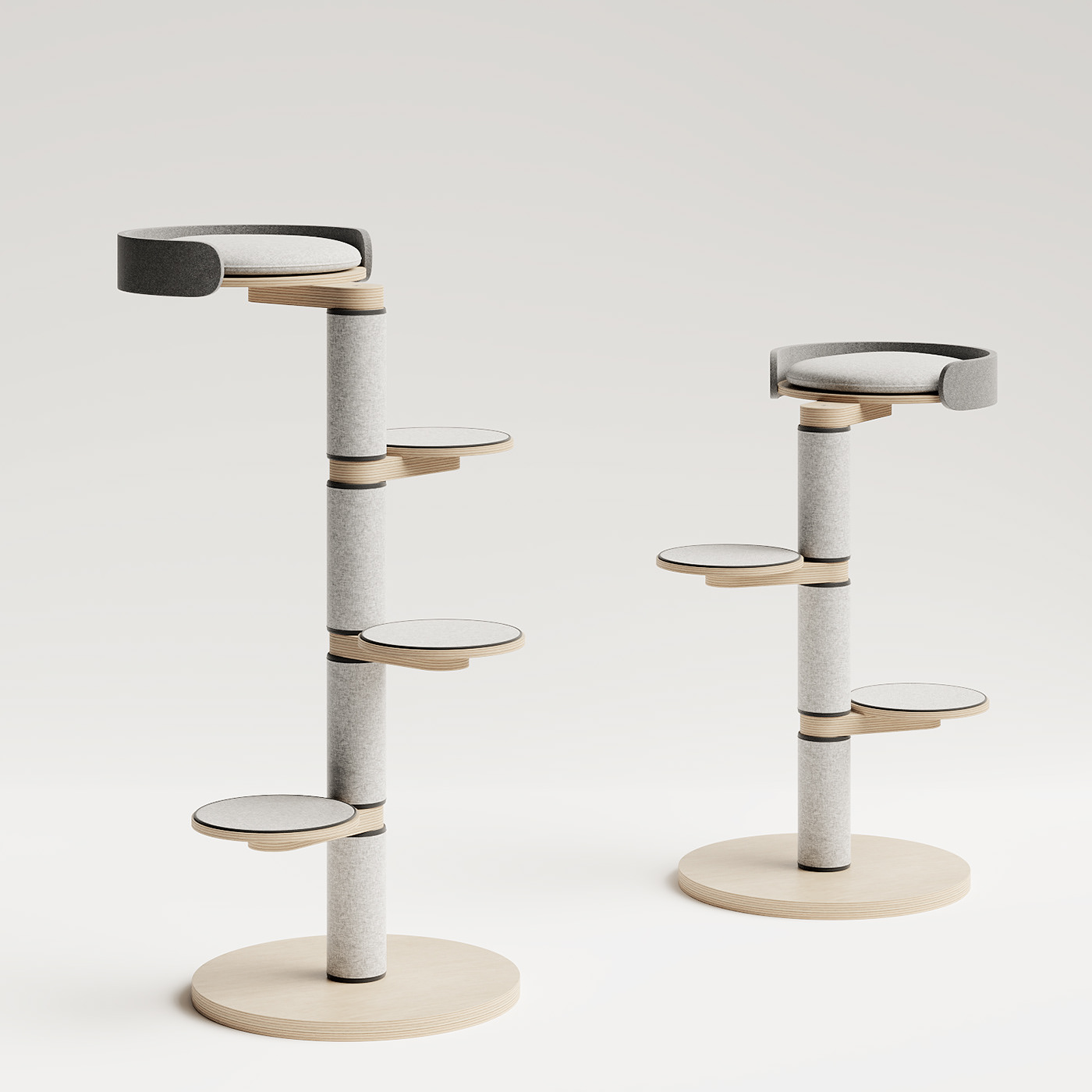
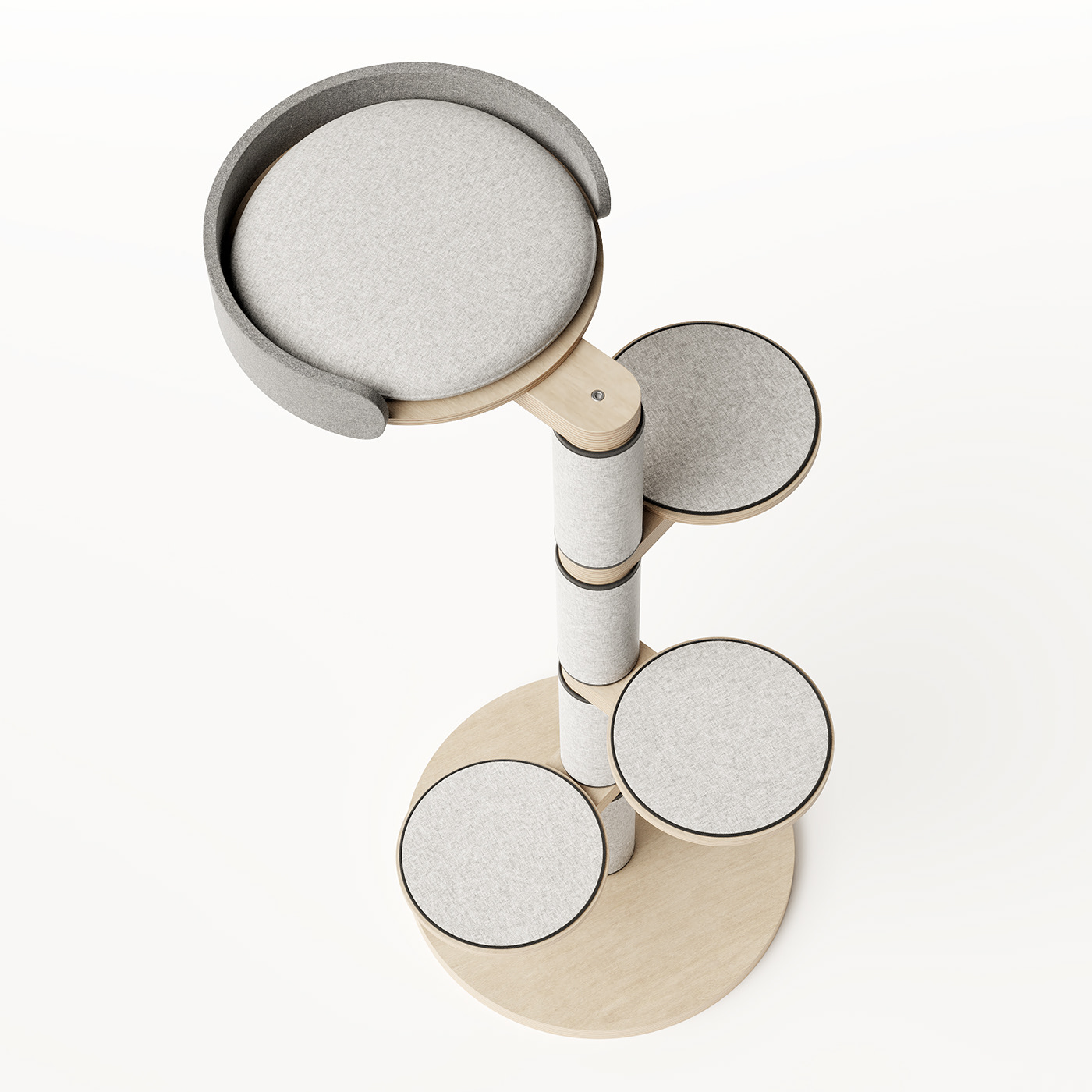
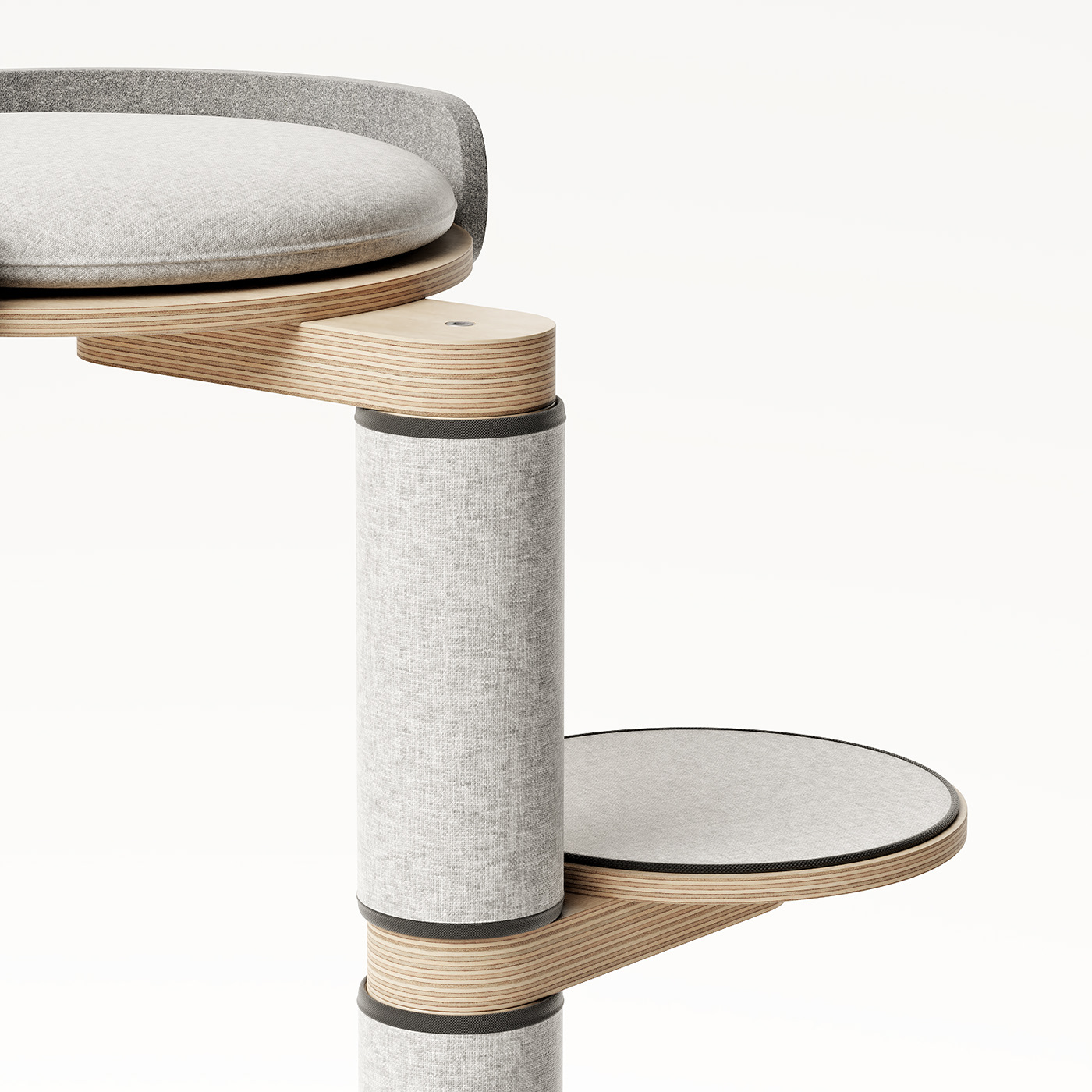
There’s also room to configure the cat tree at one’s own taste by aligning the steps to the desired place before tightening everything. The height can vary by adding or removing wooden sticks. The assembling system is based on threaded pipes and inserts (male and female) which users are familiarized with and being almost tool free.
